6 Ways Consumers are Ready for Connected Packaging Solutions

“The most profound technologies are those that disappear. They weave themselves into the fabric of everyday life until they are indistinguishable from it.” This quote from the late Mark Weiser, considered to be the father of ubiquitous computing, perfectly describes the potential of connected packaging solutions.
Sometimes the best user experience is an invisible one. It’s taking care of tedious tasks behind the scenes, ordering the products you need at just the right time, or giving the instructions only when needed. At Jabil we are working towards that seamless involvement in everyday life because we see it as the holy grail for connected packaging.
Customer-centric product innovation holds the key to creating and sustaining long-lasting value. When companies focus on solving customer problems, they earn greater brand loyalty and broader market share. That's why every consumer product manufacturer across industry segments strives to optimize customer experiences, where they can showcase true differentiation.
The ability to elevate the consumer experience is especially important in today’s digitally saturated world. While consumer packaged goods (CPG) companies have historically made major R&D investments in their brick & mortar strategy, today’s consumer landscape has turned the world of packaging upside down. Buying decisions and customer loyalty are motivated more by convenience, value and search rankings than by which product has a more compelling look and feel or boasts more bells and whistles.
From social media to smart homes, consumers are rapidly moving towards digital platforms that influence how they buy and use products. Therefore, CPG brands need to take the opportunities that are offered by digital tools, the Internet of Things (IoT) and connected devices in order to a) create better, transformational experiences for their consumers; b) to achieve a more direct connection with consumers; and c) to understand more clearly how consumers use their products. The customer acquisition funnel looks very different than it did three years ago, but CPGs are lagging behind consumers and their adoption of digital tools.
The future is coming into greater focus for connecting packaging to strengthen relationships between brands and consumers. How do consumers view this brand evolution? How do they feel about packaging innovation? What do they think of creative technology like auto replenishment and home inventory management? In what ways do consumers prefer to interact with product brands and how can packaging technology enable this?
To better understand where consumers stand in this digital landscape, Jabil conducted a survey of more than 1,000 U.S. consumers responsible for purchasing a significant portion of their household staple goods. This second annual survey repeated questions from last year to analyze trends and changes. The original survey was developed in partnership with Dimensional Research. Download the full survey report.
Here are six of the top takeaways on evolving consumer attitudes and perceptions around connected packaging solutions:
1. Subscription Service Adoption has Soared
Prior to the pandemic, less than half (46%) of respondents said they purchased household staples using a subscription. Today, nearly 7 in 10 consumers use subscription services to purchase household staples like personal care, food and beverage and home care products. These categories saw year-over-year growth rates of 54%, 62% and 60% respectively.
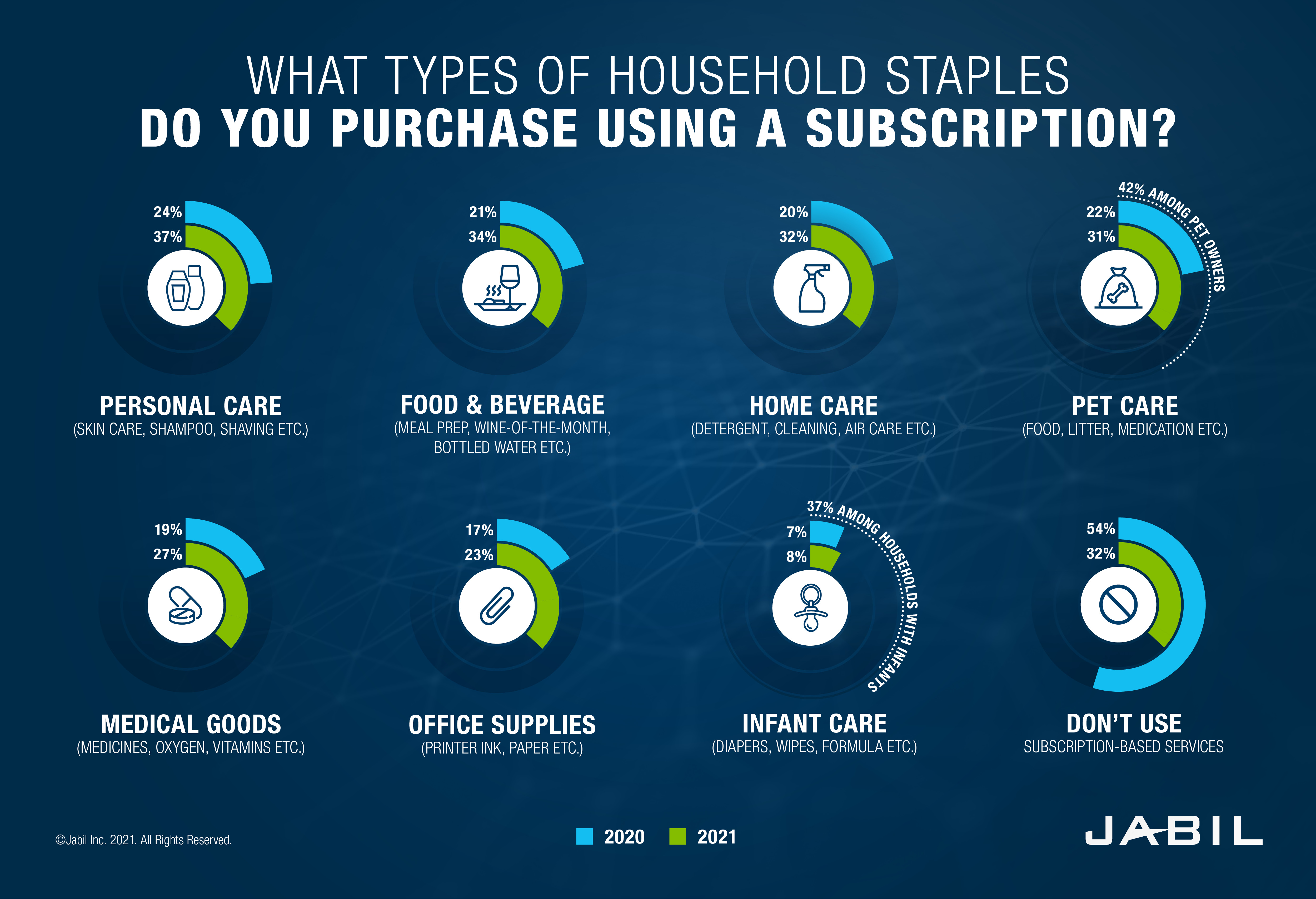
Two audience segments require extra attention, however.
Pet owners are likely to be early adopters of new technology. More than seven in 10 pet owners say they currently buy household staples through subscriptions. Specifically, pet owners are 35% more likely to use subscriptions for pet care staples, which is not unexpected. But they are also more likely to purchase home care, personal care and food and beverage items through subscriptions.
Households with infants are perhaps the strongest adopters of subscription services. More than three in four currently use subscriptions for household staples. Compared to the general population, they are 41% more likely to use subscriptions for food and beverage, 24% more likely for personal care and 37% more likely for home care. In addition, they are most likely to purchase infant care goods through subscriptions. Having an infant is a huge lifestyle shift, bringing consumption habits into a rare state of flux. CPGs that can capitalize best on making life easier for this demographic with subscriptions could look to benefit from a long-term relationship.
Two-thirds of participants say they have been using subscription services for at least two years but the concept is still relatively new for most users. More than half of participants say their use of subscription services has increased just in the last year with 12% reporting a decrease in use. Participants that self-reported no change in subscription usage dropped from 45% in 2020 to 33% in 2021, suggesting that the pandemic was a significant catalyst for habit change. Will these behaviors continue to trend toward a new normal or slowly revert back to a pre-pandemic baseline?
Furthermore, 77% of those who don’t currently have subscription services for household staples say they are open to purchasing these services in the future, especially if the right products were available at the right price.
Subscription services are one way to design a customer experience that places convenience front and center. In fact, convenience translates into habit-forming behavior. Neurological research suggests that "the mind loves automaticity more than just about anything else—certainly more than engaging in conscious consideration. Given a choice, it would like to do the same things over and over again," according to the Harvard Business Review (HBR).
For the same reasons that we take the same route to work every day, consistently purchase our favorite latte or keep the same friends over the years, we are likely to purchase the same products over and over. As long as the action or intended product consistently fulfills the customer's expectations, buying the same thing is the easier thing to do. It helps the decision-maker avoid having to make another choice.
"Every time you buy another unit of the brand in question, you make it easier to do—for which the mind applauds you," according to the same HBR article. This builds customer loyalty.
Knowing the psychology behind "customer loyalty" (or simply, purchasing habits), how can brands reduce friction for consumers and encourage repeat purchases?
2. Auto-replenishment is the Natural Evolution of Subscription Services
With recent advancements in technology, CPG brands are exploring opportunities to develop more meaningful relationships with their consumers. By gathering data and analyzing the behaviors of users, a streamlined consumer journey can be built.
Following the initial purchase of a product or brand, the first two steps of the customer journey (learning and selecting) could be eliminated. For that to happen, a brand needs to excel in two areas: 1) the value proposition to attract and retain the customer and 2) a system where the built habit can be repeated with even more convenience than before.
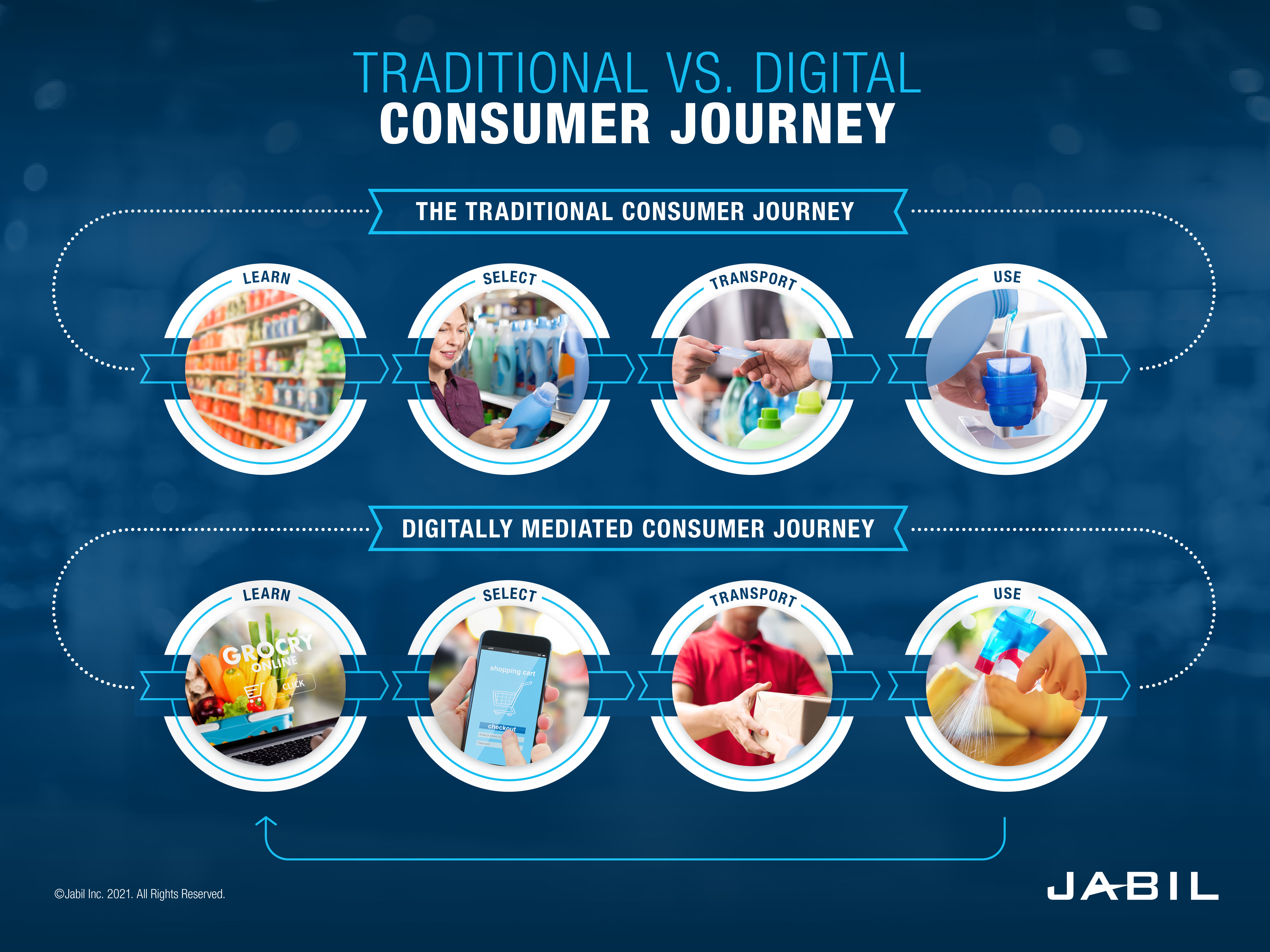
When it comes to a customer's choice, any company can benefit by making the "routine choices easier, faster, and more convenient," Professor of Management at the Columbia Business School Rita Gunther McGrath writes. With this idea in mind, brands have a tremendous opportunity to utilize auto-replenishment to free up consumers’ mental space, eliminate re-purchasing friction and improve customer retention and wallet share.
Auto-replenishment detects, at point of use, when a consumer is running low on a product, and automatically orders more. Just over a quarter of participants (27%) say they subscribe to auto-replenishment services for household staples, a 60% growth year-over-year. But those who use auto-replenishment services tend to be millennials, male, households with children, pet owners and those owning a smart speaker. In addition, 61% of those who use auto-replenishment today say they like the convenience best out of any other benefit.
Although most participants say they don’t currently use auto-replenishment services, 78% say they are interested in these types of services, especially in these categories:
- Home care products (detergent, cleaning products, air care, etc.)
- Personal care products (skin care, shampoo, shaving, etc.)
- Pet care products (food, litter, medication, etc.)
- Infant care (diapers, wipes, formula, etc.)
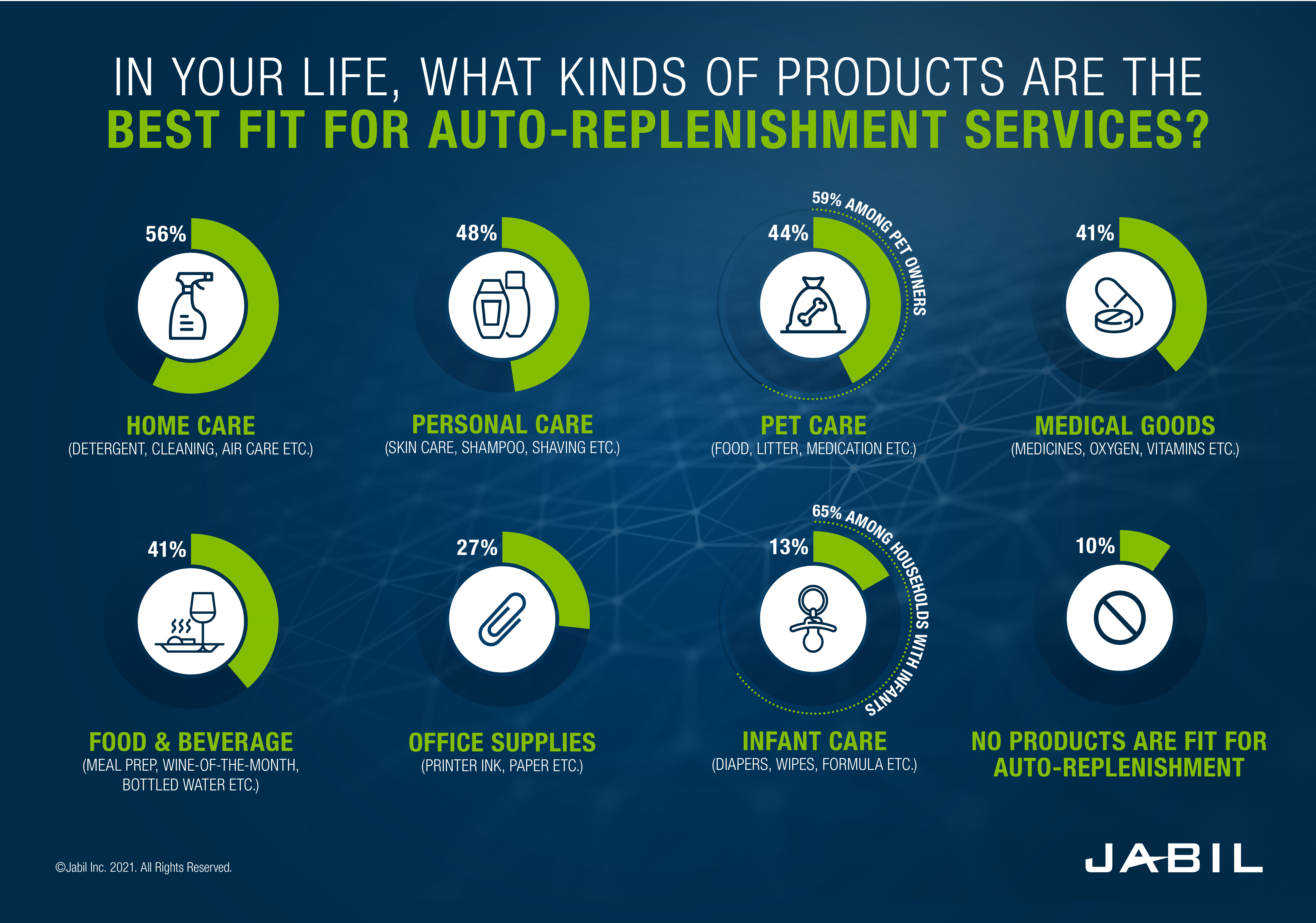
3. Consumers are Slightly More Comfortable with Consumption Sensors Than Voice Assistants
Low-cost sensors and connectivity are the bread and butter of auto-replenishment. When embedded in packaging or simple devices, these digital enablers can track the use of household goods and other essential household items.
For example, these technologies can measure levels of liquids, bulk solids or moist wipes inside a container to determine when replenishment is in order. The consumer benefits directly from this, because they never have to "remember" if they still have enough laundry detergent or body wash for the next load of laundry or shower. Ordering processes can either be automated or presented to the consumer to approve the purchase.
According to the survey, consumers are slightly more comfortable with consumption sensors that track the consumption of household staples for auto-replenishment than using voice assistants. Nearly half (43%) of participants say they are very concerned about the privacy of voice assistants while that number drops to 39% with consumption sensors.
4. Consumers Want Brands to Deliver Value Beyond the Product
Consumers are expecting more from their product experiences than ever before. They expect to bring products that are chemical-conscious into their home. They expect companies to respond quickly to their feedback. They expect that online purchases won’t arrive with excessive boxes and packaging that’s damaging to the environment.
We’ve seen a lot of great innovation in the CPG industry to deliver products that make household maintenance easier, which has set the stage for consumers to have very high expectations for even commodity products they buy every day, including water bottles.
With the growing access for people to communicate and interact with consumer brands, there are some clear advantages. Participants to the Jabil survey say they enjoy better pricing through coupons and promotions, supporting companies that make good products and learning interesting and useful information about the products they purchase.
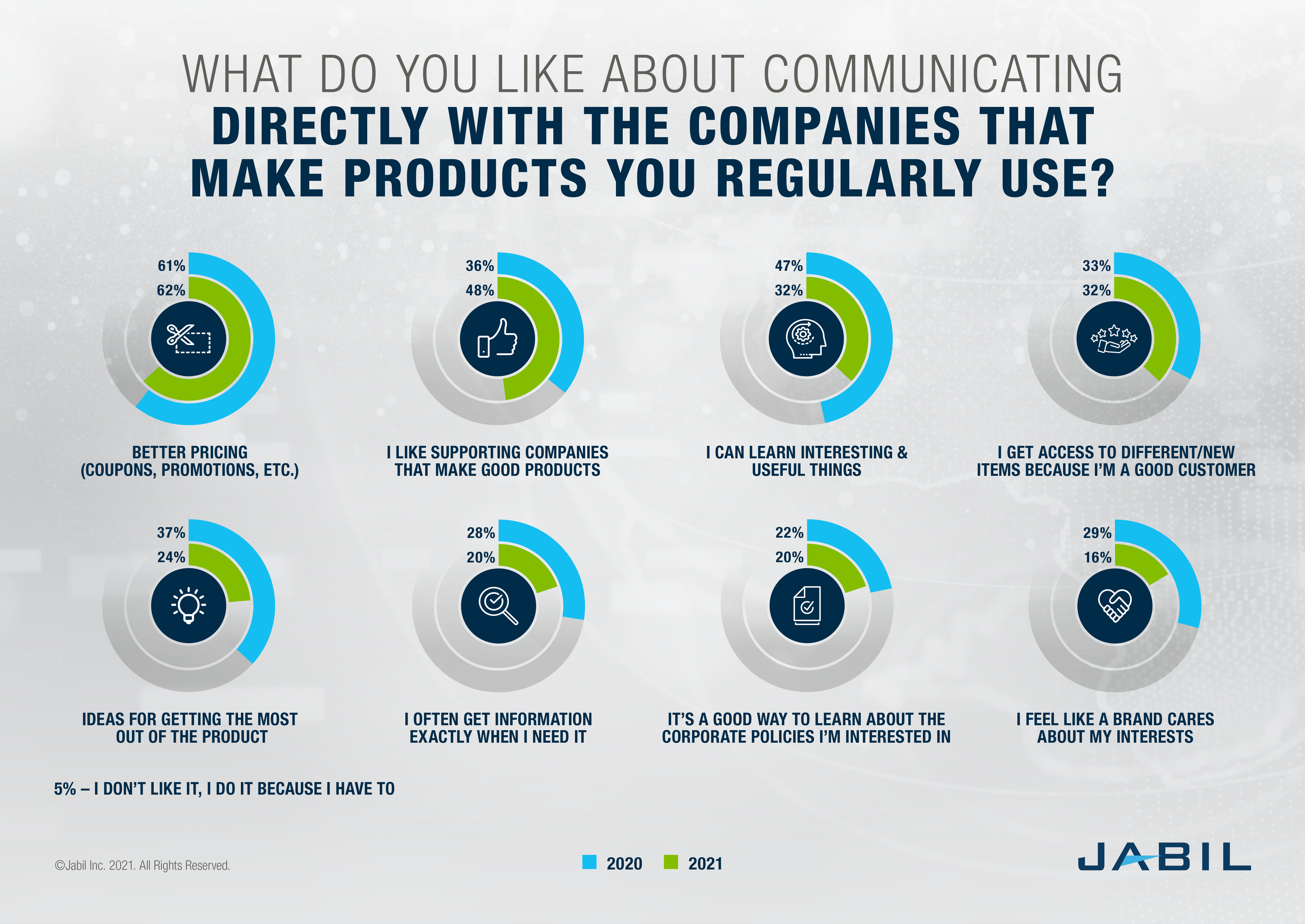
Similarly, there are some downsides. The top three things consumers dislike about interacting with product brands include being spammed with irrelevant information, the feeling that brands just want to sell more not help the consumer and that it’s too hard to stop or reduce the level of communication. Households with higher incomes are more likely to dislike being spammed.
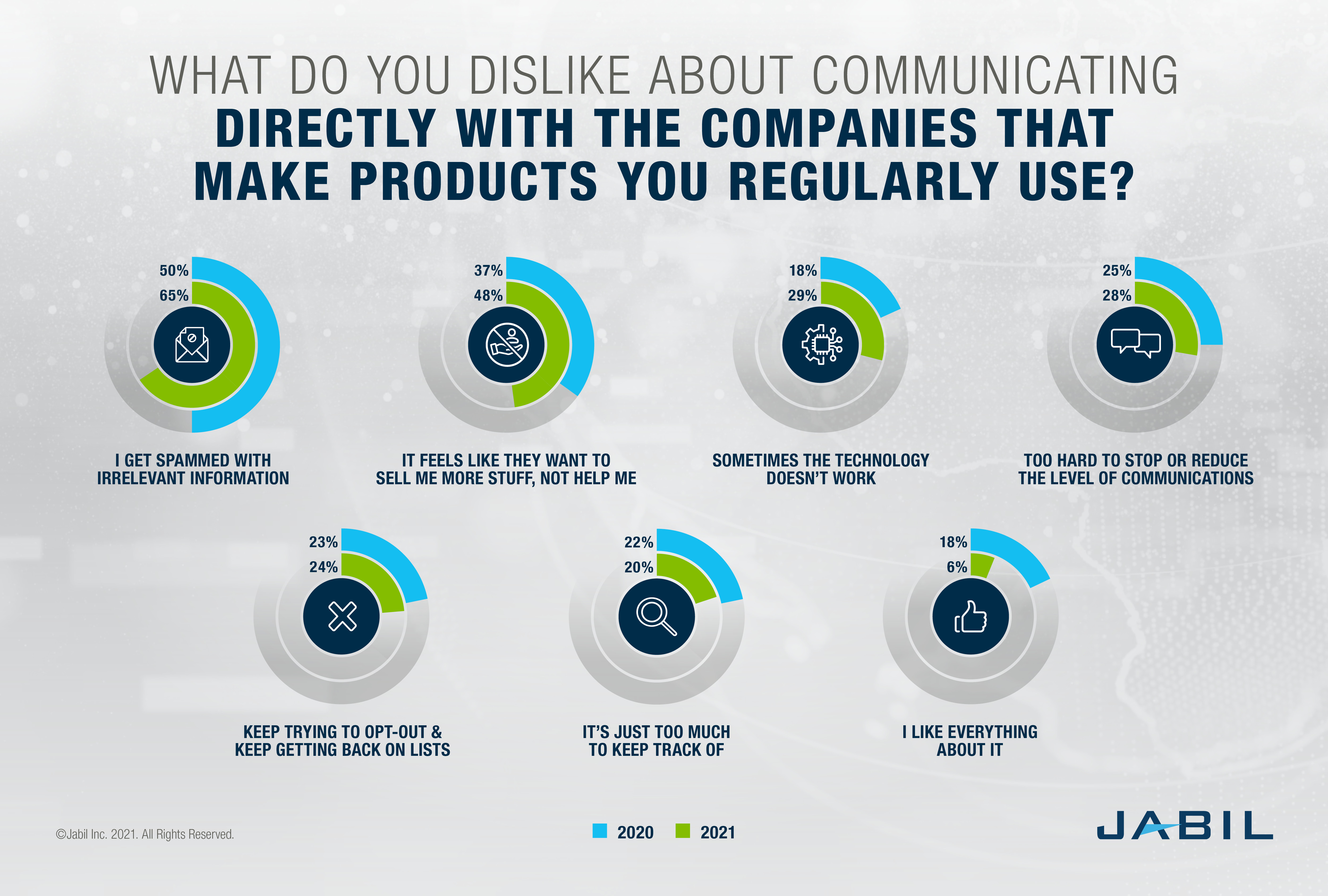
In many ways, auto-replenishment can be the cure to these issues. The capacity for digital technology and connected packaging solutions to deliver useful and timely information, while minimizing headaches, will be a huge improvement to the product experience. In fact, connected packaging will enable a whole new level of direct-to-consumer communications.
Direct-to-consumer communications tools, integrated with connected packaging formats, radically improve the customer experience while creating entirely new engagement opportunities for marketing teams. For example, you will be able to reignite fading users with a well-timed coupon or stimulate new users with recipe ideas and hacks simply because the data will be at your fingertips.
5. Consumers Find Home Inventory Management Useful
One of the most exciting aspects of smart packaging is that it can transform the user experience beyond purchase and use, linking up with smart home ecosystems to provide consumers with more information.
CPGs will soon be able to fuse data from different durable devices and primary packages to really understand how consumers are using their products inside the home. One potential benefit is enabling home inventory management, so consumers always have visibility into what they need and what they already own.
An overwhelming majority of participants in the Jabil survey say they have mistakenly bought things they’ve already owned in the past. Nearly five in 10 say they do this on a monthly basis. That’s why 94% say they would find a live list of what they own useful when they are out shopping. Nearly six in 10 participants say they would prefer an app that tracks the items they use most frequently.
6. Consumers Understand that User Data Helps Create Better Products
Connected packaging ecosystems are creating invaluable opportunities for CPG brands to understand the context and details of both product use and consumer lifestyles. Of course, all the roads lead to data and consumers understand that. In fact, 90% of consumers understand that use data helps brands create better products.
If CPG brands could better understand exactly how consumers use their products, they could deliver better user experiences. After all, who likes to deal with the cognitive overhead of keeping household item lists in your brain, when you could be spending more time on things that bring you joy?
That’s why more than six in 10 participants say they don’t mind if companies collect data on how they use products—as long as the consumer is aware of how the data will be used. In addition, these consumers say they don’t mind the data collection if CPG brands are using it to improve the products.
The future of packaging is wide open with possibilities. What it allows, fundamentally, is the delivery of content and the creation of a direct relationship between the brand and consumer—something none of us had really had the capability to provide before—that increases consumer engagement.
CPG brands are aware of this shift and interested in responding to it accordingly. They are interested in delivering new and enhanced customer experiences. But the challenge at this stage is the convergence between packaged goods and technology. The opportunity of transforming packaged goods to deliver more value than ever before with a connected packaging solution—to weave them into the fabric of everyday life so they are indistinguishable from it—now, that’s priceless.
Download the 2021 Connected Packaging Survey Report
Insights from over 1,000 U.S. consumers on their perceptions and attitudes on connected packaging, subscription services, auto-replenishment, data privacy and more.